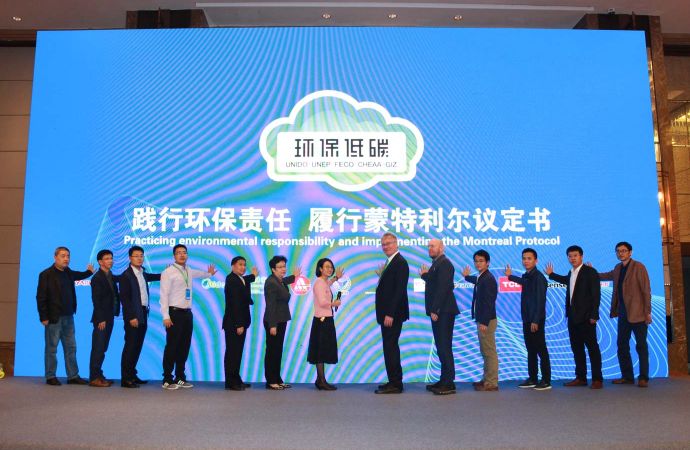The report from the Amrica's Pledge colation was released at COP25 in Madrid.

America’s Pledge, a two-year-old coalition of U.S. states, cities, businesses and other organizations committed to address climate change, has released a new report that includes HFC-reduction among its end-use decarbonization measures.
The report, “Accelerating America’s Pledge: Going All-In to Build a Prosperous, Low-Carbon Economy for the United States,” was released this week at the 2019 United Nations Climate Change Conference (COP25), which is being held in Madrid, Spain, from December 2 to 13.
America’s Pledge was formed in 2017 in response to the announcement by the Trump Administration that it would be withdrawing from the Paris climate accord, a process that formally began last month.
The “Accelerating America’s Pledge” report “offers a roadmap to reaching the nation’s climate goals and sets the groundwork for a clean energy future for decades to come,” said Michael Bloomberg, former mayor of New York and current 2020 U.S. presidential candidate, and Edmund Brown Jr., former Governor of California, in an introduction letter. Bloomberg and Brown are the founders of America’s Pledge.
Bottom-up or all-in
The report outlines two scenarios for climate action in the U.S. – “bottom-up,” drawing on the policies of the most successful states, cities and businesses; and “all-In,” which combines bottom-up efforts with new federal engagement.
It also describes three main climate-remediation principles: accelerate toward 100% clean electricity and other energy supplies; decarbonize end uses such as buildings, transportation and industry, primarily through electrification and efficiency; and enhance ecosystems.
Under the bottom-up scenario in 2030 for decarbonizing end uses, the report recommends that states “adopt policies to phase down HFCs consistent with the global Kigali Amendment [to the Montreal Protocol] and to reduce leaks from existing stock.” Under an all-in scenario, the U.S. government would take those steps. (The Environmental Protection is still regulating HFC leaks under its Section 608 rule.)
Decarbonization, the report notes, covers “emissions of both carbon dioxide and non-CO2greenhouse gases, such as methane (CH4), hydrofluorocarbons (HFCs), and nitrous oxides (N2O).
Decarbonization methods, the report adds, could be part of state-mandated, economy-wide caps on carbon emissions.
The report estimates that in a bottom-up scenario, emissions of HFCs and other fluorinated gases would be reduced 6% below 2005 levels by 2030; in an all-in scenario, the reduction would be 37% below 2005 levels by 2030.
The report comments on steps already taken by several states – including California, Washington, New York, Vermont, Maryland, Connecticut and Delaware – to reduce HFC emissions, as part of the U.S. Climate Alliance.
The report also observes that a number of supermarket chains, such as Grocery Outlet and ALDI US, “are moving toward natural refrigerants” and documenting the energy performance of these systems. “The results of these pilots“can help other retailers make more informed economic decisions about the return on investment of various options and can provide contractor training opportunities, addressing a significant barrier of this relatively new technology.”
The report also cites the contributions being made by the North America Sustainable Refrigeration Council (NASRC) to remove barriers to the adoption of natural refrigerants.
[Accelerating America’s Pledge] offers a roadmap to reaching the nation’s climate goals and sets the groundwork for a clean energy future for decades to come." - Michael Bloomberg, Edmund Brown Jr.
Related stories



